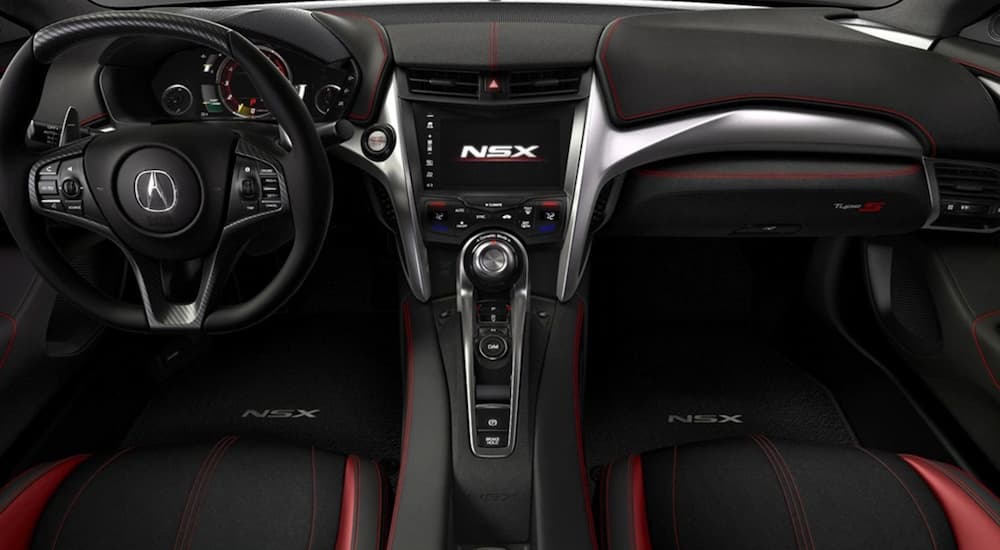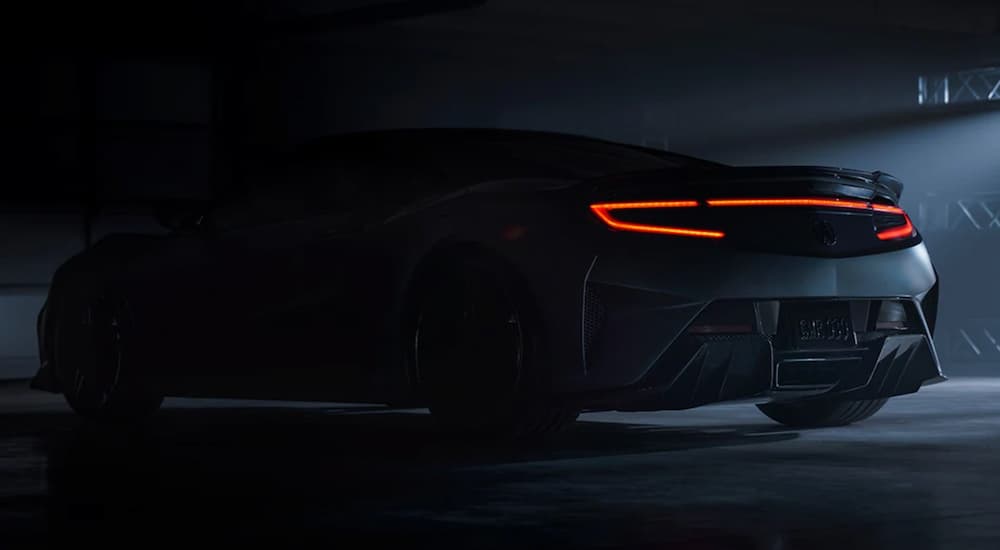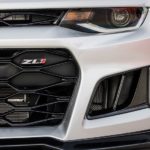It only took 24 hours for all 350 units of the limited production run to sell out. Just like that, the second generation of the Acura NSX came to an end. Given how popular the first-generation model was, it feels like the second iteration never took off. I’ve literally never seen one in the wild, so this generation feels over before it began, and with all the impossible-to-live-up-to hype, I find that to be a tremendously sad thing. But, the NSX remains as exciting as always, for the same reasons as always, and its influence on the industry should linger long after it’s vanished from Acura/Honda dealerships around the world.
Part of the struggle of the Honda family’s only supercar is its uniqueness; it was just too different from the rest of Acura’s lineup to succeed as a halo car. As a last-minute remedy for that situation, the signature Acura Type S performance label has finally been applied to the latest NSX and TLX, finally making a connection from Acura’s flagship to the rest of the brand – but sadly, it’s too little, too late.
Despite this, the NSX is going out with a bang – every 2022 Acura NSX is a Type S model, marking the first time that the legendary NSX Type S lineage has been sold outside of Japan. Thus, to paraphrase the famous poem, while some cars go gentle into that good night, the NSX rages against the dying of the light – Acura has given everything they could to make what may be the last NSX the best that it could be.

A Hybrid Powertrain for a Hybrid Supercar
From the very beginning of the second generation, the NSX has been a hybrid, using electric power to provide AWD and enabling Quiet Mode for a more polite experience than most supercars allow. The battery certainly packs on the pounds, making the NSX the heaviest vehicle amongst its competitors, but the benefits are palpable. The front-mounted twin motor unit (TMU) drives the front wheels, adding 108 lb-ft of torque and 72 hp to the engine’s output. This unit has been modified for 2022, dropping its gear ratio from 10.382:1 down to 8.050:1 – a drop of more than 25% that allows more electric torque to hit the pavement from a standstill, thus improving the Type S’s acceleration.
But that’s not the only modification to the electric powertrain – by improving the efficiency of the intelligent power unit (IPU) that controls battery usage, Acura has effectively upgraded the entire battery system. Its electric capacity is up by 20%, and output is up 10%, both enabling a re-tuning of the four dynamic driving modes (Quiet, Sport, Sport+, and Track) of the signature NSX Sport Hybrid SH-AWD control system to maximize the newfound power. A bonus is that the NSX’s EV-only range, used in Quiet Mode, is extended thanks to the higher capacity. How much is a mystery; since it isn’t a plug-in hybrid, the EPA doesn’t rate the NSX’s electric range. Motor Authority reported about a mile in their testing of older models, which indicates around a 1.2-mile range for the Type S. Not much, but enough to sneak in and out of a quiet neighborhood without waking anyone.
Acura recognized early that electrification was the way of the future and used the NSX platform to push the limits of what their hybrid tech could do. The result was a 3850-lb supercar that claimed a 3.1 s 0-60 time and could reach top speeds exceeding 190 mph while still being rated at 21 mpg combined – all before the Type S upgrades. If that isn’t super-hybrid performance, then I don’t know what is.
Transmission Transformed
The NSX Type S press release reads as though every other change was an adjustment to transmission performance. Rather than incorporate upgrades into the next big thing, Acura tweaked what they’ve been using all along to get the absolute most out of it, and the results on paper are incredible.
For starters, in Sport Mode and up, the NSX Type S features Rapid Downshift. Anybody familiar with paddle shifters knows the pain of trying to drop from 6th into 3rd gear for a huge power spike – now consider that the NSX uses a 9-speed and imagine navigating a drop from 9th into 3rd! Rapid Downshift does away with this entirely – by holding the downshift paddle a mere 0.6 seconds, the NSX Type S will drop straight into the lowest gear that it can hold without over-revving the engine.
Upshifting has been tightened up as well. The time between clicking the upshift paddle and the engagement of the clutch has been shaved down, via programming changes, by 50%, improving the overall acceleration by cutting shift times in half.
Sport+ Mode works in additional tweaks to optimize the NSX Type S’s cornering. If operating in fully automatic mode (without using the paddles), the NSX Type S will downshift as soon as you hit the brakes. This completes the gear change before the car leans into a corner, enabling smoother power delivery through the apex and out of the turn.
Finally, Track Mode rolls out one last new trick. In this mode, the maximum rev threshold for downshifting anywhere between 7th and 2nd gears is increased by 1500 rpm compared to the 2021 NSX, thus enabling larger downshifts and even higher power coming out of turns. Other cool features like optimized intake and engine sound control profiles help deliver a clearly audible cue for hitting the ideal shift points in this mode, helping drivers nail every hot lap.
Performance Visualized
The exterior styling of the 2022 NSX Type S is noticeably changed from the 2021 model. This is because the exterior was reimagined to be entirely function first, style second. Case in point? The front fascia, formerly a stylish piece with chrome trim, is now a gaping maw that calls to mind Lamborghini’s design language. The Total Airflow Management design is intentional in its changes – the larger intake, as well as the two smaller intakes on either side of it, enable a 15% increase in cooling capacity for the intercoolers. This introduced problems with stability that Acura counteracted with a new carbon fiber front spoiler – problem, solved.
Those front intakes on the sides serve a second purpose – directing air to the sides of the car, they complement the design of the front corners to generate an air curtain that reduces wake effects and thereby improves airflow to the mid-mounted engine through the side intakes. Then as air reaches the rear of the NSX Type S, a new carbon fiber diffuser inspired by the NSX GT3 Evo race car slows it down to generate additional downforce.
The diffuser serves its function perfectly – it generates just the right amount of airflow disruption to also shift the negative pressure peak position towards the rear, balancing the net effect of downforce on the car. Fins on either side of the diffuser also serve to disrupt wake effects from the tires during cornering, working to ensure optimal aerodynamics at all times.
Road Manners and Racing Spirit
The diffuser isn’t all that the NSX Type S borrows from its racing variant. The 3.5L V6 engine hosts twin turbochargers, lifted straight from the GT3 Evo to generate a 6% increase in maximum boost pressure from 15.2 psi to 16.1 psi. Factor in a 25% bump to the fuel flow rate thanks to new injectors, and the engine output achieves a significant performance bump over the 2021 version. The former maximum 500 hp increases to 520 hp, but even better, the 406 lb-ft of torque is boosted to 443 lb-ft for total powertrain outputs of 600 hp and 492 lb-ft when the electric motors are added.
Those changes, like virtually every update for the NSX Type S, serve to improve acceleration and handling, which is a key component of NSX design. This has never been a straight-line muscle car – the NSX has always been a reliable, daily-drivable, relatively affordable all-around performer. To further improve the Type S’s performance, Acura has also lowered the center of gravity with specially selected components.
It starts at the roof, which is carbon fiber standard (formerly, this was a $6000 option). Then there’s the Lightweight Package, which carbonizes components everywhere else. This upgrade includes interior trim carbon fiber, a carbon fiber engine cover, and, most significantly, a set of carbon ceramic brake rotors. The 6-piston front Brembos (and 4-piston rear) are virtually fade-free with carbon ceramic rotors, and the net weight savings of the package – 57.8 lbs – shave another 2% off the curb weight of the car. An interesting quirk is that the formerly-resin front intake meshes have been replaced with steel – not a weight-saving measure, but one that lowers the center of gravity even more.
Finally, the NSX Type S’s ability to navigate the twists and turns of any road or track at speed depends most on its tires. Wider front and rear tires – 245 mm up front and 305 mm in the rear, with 19″ and 20″ wheels respectively – come dressed in bespoke Pirelli P-Zero tires that use an asymmetric tread design and ultra-high-performance compounds to achieve outstanding handling results. The claim is a 6% increase in lateral grip – and based on Car and Driver’s 1.06 g achieved in 2017, that means the Type S can hold an incredible 1.12 g through the curves.
The Car of Our Dreams
Alas, the NSX Type S, the relatively affordable supercar, eludes us still. After a 7-year run, the second generation is over, and there are no clear plans for a third. Given how long it took to get a second gen when there was a clear intent to make it, it’s safe to say that this is the end of an era. But what an end it is! And how about the entire production run of 350 cars (300 for the US) selling out in a day? Here are some fun numbers. The 300 sales in the US make this the second-best year for the second-gen NSX after 2017 (the second year of the run). It also marks the second-best sales since the closing years of the first-gen model, which sold over 300 units for the last time in 1998.
Doesn’t it make you think they should’ve offered more of the NSX Type S? Looking back, the 1,940 first-gen models sold in 1991 alone outsold the entire 1,814 car run of the second generation. The modern NSX just never caught fire in the market like the old one did, perhaps because the hype was too high, or perhaps because no modern car could live up to that standard set nearly 30 years ago. Whatever the reason, the 2022 Acura NSX Type S is now bound for the history books (and future auction halls), which means I can’t have one. But even though I’m sad about that, I’m still giddy that this car exists in the first place.






